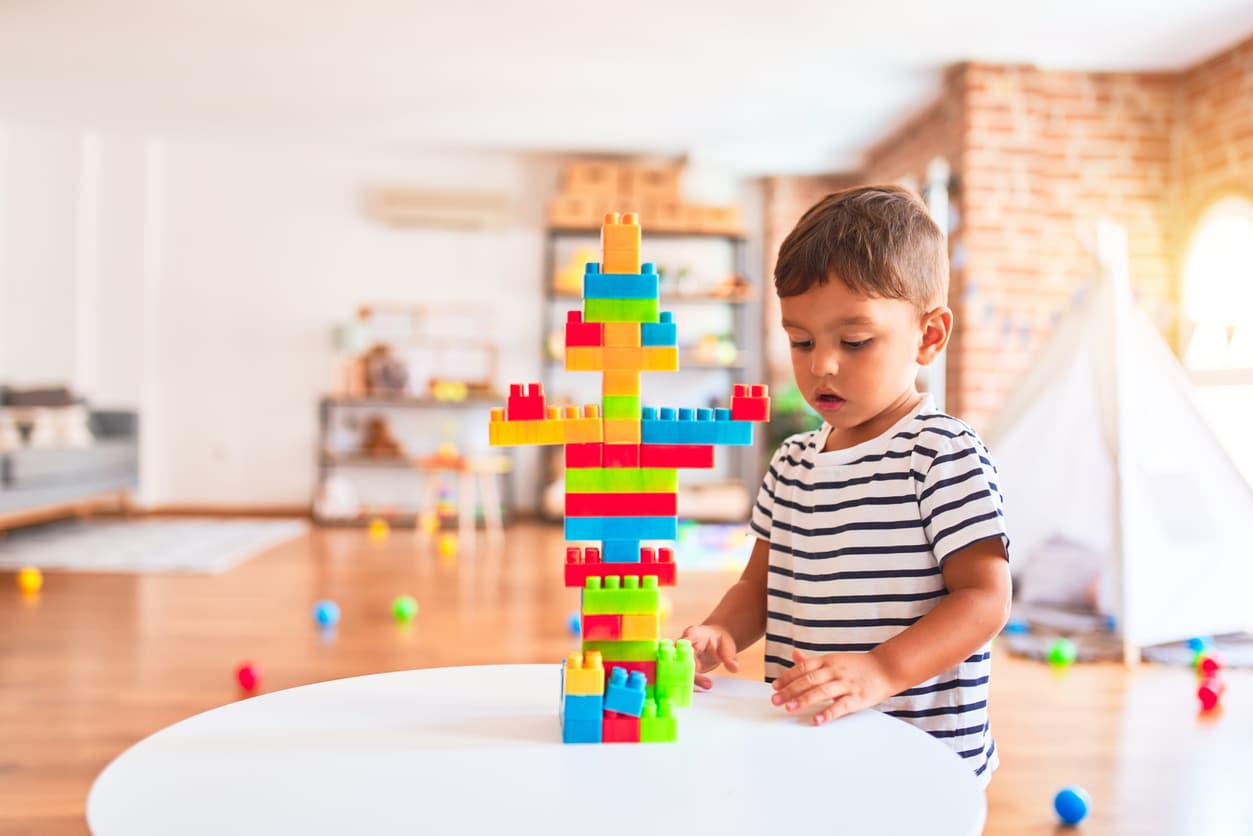Many factors influence early childhood development. When studying child psychology, it is crucial to get a broad view of the factors affecting children’s development and how they grow emotionally, cognitively, physically, and socially.
We’ve discussed the topic in a previous blog post called Understanding Key Stages of Childhood Development. However, what influences development in each of these stages? In this post, we’ll discuss what childhood development is and what factors affect it.
What is childhood development?
Early childhood development is a critical window, as it can impact a person’s later development as an adult. While it is never too late to learn, focusing on providing optimal parenting and development can help improve a child’s chances of living a healthy and fulfilling life.
A key consideration in this area is nature versus nurture. Are children born with innate characteristics, or does nurturing play a role? Developmental psychology suggests that it is a combination of both biology and environment. It’s essential to focus on what we can do to optimise our environments for enhanced developmental outcomes.
We’ll now share some of the most prominent areas that influence childhood development below:
Parenting styles
Every parent has a unique way of interacting with their child or children. However, researchers have identified four main parenting styles: authoritarian, authoritative, permissive, and uninvolved.
We’ll explain each of these briefly below, as well as how each can influence childhood development:
- Authoritarian: This style involves strict rules and one-way communication between parent and child. While children who experience this parenting style may behave and be able to follow instructions, they may also struggle with low self-esteem and anger and rebel against authority later in life.
- Authoritative: Parents who follow this style prioritise building a close and nurturing relationship with their children. They establish clear expectations and explain the reasoning behind their disciplinary actions. This style typically leads to the healthiest outcomes but requires patience and effort.
- Permissive: This parenting style is typically warm and nurturing with low expectations. Disciplinary actions are infrequent, which could lead to unhealthy habits. While children have lots of freedom and may develop good self-esteem and social skills, they can also become demanding and struggle with self-regulation.
- Uninvolved: While they might meet their basic needs, uninvolved parents are typically emotionally detached, which means minimal nurturing and expectations. These children may become more self-sufficient but struggle with emotional regulation and maintaining relationships.
Parents won’t necessarily conform to one specific style, but by raising awareness of these approaches, we can provide ways to optimise interactions with children based on their particular needs.
Attachment and early relationships
Attachment theory states that our relationships with our caregivers can influence our ability to maintain relationships later in life. Therefore, proponents of this theory advocate that parents foster secure and nurturing relationships with their children, especially during infancy.
According to attachment theory, there are four main attachment styles: secure, anxious, avoidant, and disorganised. We’ll explain these below and how they contribute to childhood development.
- Secure attachment is when a caregiver consistently meets an infant’s basic needs. This style helps children to form healthy relationships, trusting that they will be soothed and cared for.
- Anxious attachment occurs when a caregiver does not meet an infant’s needs consistently. Therefore, the child might struggle to trust others, affecting future relationships.
- Avoidant attachment occurs when a caregiver meets a child’s basic physical but not emotional needs. Children then learn to be self-sufficient and not to rely on others for support.
- Disorganised attachment results from children experiencing fear, trauma and erratic or incoherent relationships with caregivers. Children may develop mental health and personality disorders and struggle to form healthy relationships. These children may crave close relationships but push people away when they pay them attention.
Our attachment styles aren’t always straightforward, and people can also resonate with multiple attachments. However, by learning about this theory, we can become more attuned to a child’s needs and respond more effectively.
Exposure to trauma, stress, or instability
If a child experiences trauma, stress or instability, this will affect a child’s development. Research on the effects of childhood trauma suggests that trauma may impact various aspects of a child’s physical and mental health, depending on the nature and severity of the trauma.
Stress and instability may not result in trauma, but they will also impact a child’s sense of security and control. Toxic stress may not be traumatic, but it can affect brain development, as a child’s nervous system isn’t able to return to normal functioning due to a lack of supportive relationships and comfort.
Some examples of how childhood trauma can affect a child’s development include:
- Developing PTSD and associated coping mechanisms, such as hypervigilance.
- Physical health issues such as asthma, heart disease, diabetes and stroke
- Mental health impacts such as anger control issues, depression, emotional distress, PTSD and psychotic disorders
- Children may also become dissociated, which means they mentally separate themselves from the experience and view it as an external observer
- Children who experience trauma and don’t receive support may experience suicidal ideation and attempt suicide
- Trust issues: Children may struggle to trust other people if they have experienced trauma
With this awareness of trauma and its potential effects, we can develop better ways to support children who have experienced it. By addressing and working to resolve adverse experiences earlier on, we can also help children become more resilient and equip them with tools to regulate their emotions as adults.
Socioeconomic status
Socioeconomic status (SES) affects multiple areas of a child’s development. According to the American Psychological Association (APA), higher levels of SES generally result in more favourable outcomes. However, lower SES levels can result in the following impacts on various aspects of development:
- Psychological health: Research associates lower SES with higher levels of emotional and behavioural difficulties and aggression. Lower SES also affects mental health, with higher rates of depression and anxiety.
- Physical health: Due to a lack of proper access to nutrition and other factors, low SES can lead to sedentary lifestyles and obesity, as well as heart disease and chronic stress.
- Education: Without access to the same level of education and stimulation as higher SES levels, children from lower SES backgrounds can struggle with decreased educational success, higher absenteeism, dropping out and lower literacy skills.
- Family wellbeing: Lower SES levels impact family stability, which includes challenges such as domestic overcrowding, single-parent families with low income and exposure to violence. However, strong parent-child bonds promote healthy child development.
With awareness of SES’s effect on development, we can create more supportive social structures to help children thrive even in difficult circumstances.
Cultural norms and expectations
Culture is a group of people’s shared attitudes, beliefs, traditions, and practices. These differ between families worldwide, but since our globalised world is so interconnected, it’s crucial to understand how these factors influence childhood development.
Overall, culture plays a role in learning and socio-emotional development. Behaviours will be promoted or discouraged in specific cultural settings, which can influence how a child develops. For example, in China, research shows that social competence is associated with social inhibition. However, social inhibition may translate to a lack of social skills and hamper a child’s social development in other contexts, for example, in Western society.
Therefore, cultural context will influence development, as children will learn from their elders about right or wrong and adjust their behaviour accordingly (or not). However, in a multicultural world, children can receive contrasting information about how to behave. Therefore, by building awareness of cultural values and how people might view them differently in other contexts, we can assist in developing cultural literacy, which can help children and parents manage expectations across various cultural environments.
Learn more about developmental psychology and childhood development
In the above article, we discussed some influences on childhood development. Overall, it’s helpful to consider these factors to optimise child development from an environmental perspective. Each of the above sections is complex, but by paying attention to parenting and attachment styles, trauma, socioeconomic status, and cultural norms, we can build more holistic frameworks to support childhood development.
If you’re interested in learning more, we offer the following short online courses:
- Psychological Theories of Child & Adolescent Development
- Childhood Disorders: Causes, Symptoms, Misdiagnosis & Psychotherapeutic Treatment Modalities
- Integrating Gestalt Therapy When Working with Children
- Youth Mental Health First Aid
- Counselling Children & Youth
To expand your knowledge about child and adolescent development, you can also watch our online webinar, Understanding Child and Adolescent Behaviour:





